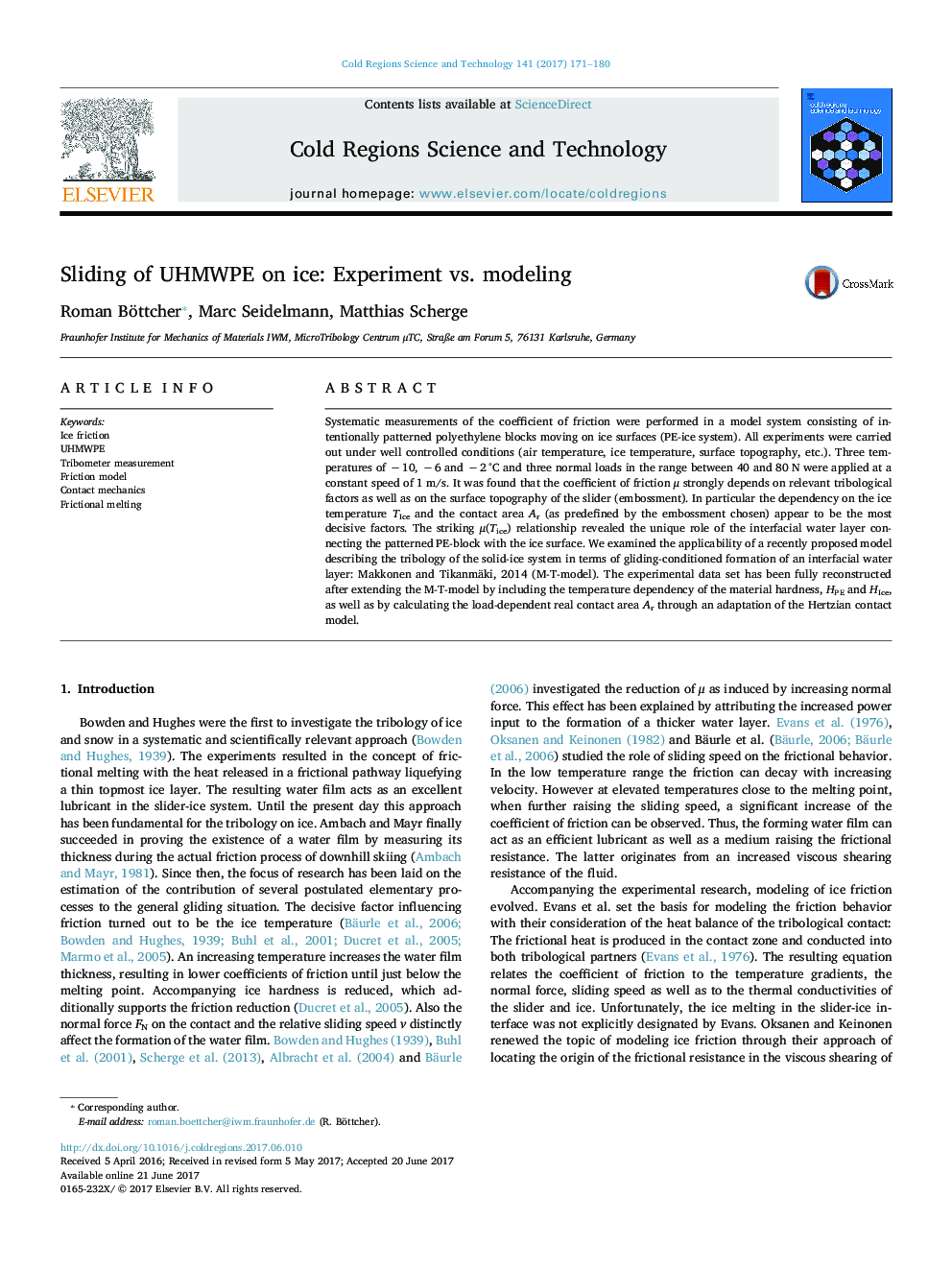| Article ID | Journal | Published Year | Pages | File Type |
|---|---|---|---|---|
| 5779366 | Cold Regions Science and Technology | 2017 | 10 Pages |
Abstract
Systematic measurements of the coefficient of friction were performed in a model system consisting of intentionally patterned polyethylene blocks moving on ice surfaces (PE-ice system). All experiments were carried out under well controlled conditions (air temperature, ice temperature, surface topography, etc.). Three temperatures of â 10, â 6 and â 2 °C and three normal loads in the range between 40 and 80 N were applied at a constant speed of 1 m/s. It was found that the coefficient of friction μ strongly depends on relevant tribological factors as well as on the surface topography of the slider (embossment). In particular the dependency on the ice temperature TIce and the contact area Ar (as predefined by the embossment chosen) appear to be the most decisive factors. The striking μ(Tice) relationship revealed the unique role of the interfacial water layer connecting the patterned PE-block with the ice surface. We examined the applicability of a recently proposed model describing the tribology of the solid-ice system in terms of gliding-conditioned formation of an interfacial water layer: Makkonen and Tikanmäki, 2014 (M-T-model). The experimental data set has been fully reconstructed after extending the M-T-model by including the temperature dependency of the material hardness, HPE and HIce, as well as by calculating the load-dependent real contact area Ar through an adaptation of the Hertzian contact model.
Related Topics
Physical Sciences and Engineering
Earth and Planetary Sciences
Earth and Planetary Sciences (General)
Authors
Roman Böttcher, Marc Seidelmann, Matthias Scherge,
